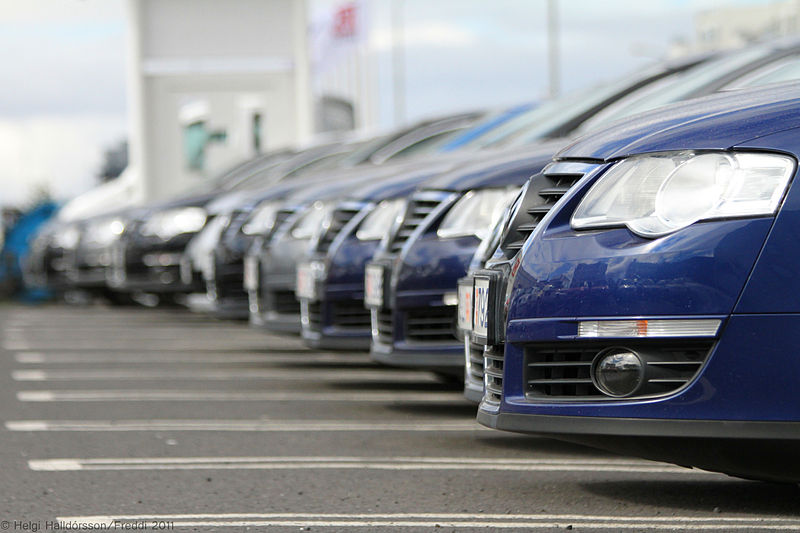GadgetWheels
25 years of data shows fall in vehicle theft
Usually, looking back 25 years can be nostalgic. However, when the focus is on vehicle crime, it is unlikely to evoke sentimentality, but can paint a very insightful picture. The latest Tracker Vehicle Crime Index reveals vehicle crime statistics since the company’s inception 25 years ago, recorded from its installed vehicle base and analysed in line with its financial year.
The statistics indicate that the level of vehicle crime was significant in the early years of vehicle tracking, with vehicle crime activities affecting 4.5% of Tracker’s customer base at the peak in 1999. However, this rate declined as vehicle tracking matured and the insurance industry drove an increase in subscriptions to vehicle tracking services. The level of vehicle crime has been consistent since 2012 at 0.7% of Tracker’s customer base, dropping to 0.6% for the past three years.
“As one of the first vehicle tracking companies established in South Africa, Tracker was in the trenches,” says Duma Ngcobo, chief operating officer at Tracker South Africa. “The early adopters of vehicle tracking services would most likely have been those that really needed it. However, the confluence of insurance and tracking companies, plus the degree of technological innovation from reactive to proactive and then pre-emptive vehicle tracking, would have had a positive impact on driving down the rate of vehicle crime.”
Nevertheless, the nature of vehicle crime is changing. For the past three years, hijacking has been on the rise and is now more prevalent than theft. Hijacking attributed a higher percentage of the Tracker vehicle crime activities in 2021 when compared to theft, averaging a 54/46% split. This is higher than the last time hijacking overtook theft, during 1999 with a 52/48% split.
Ngcobo says: “The slant towards hijacking is most likely an opportunistic tactic, with a noticeable increase in vehicles being targeted for their loads, particularly fast-moving consumable goods. Drivers carrying large amounts of cash are also being targeted. South Africans should be wary and remain vigilant at all times, especially when returning home from shopping or when goods bought online are delivered to their homes. Hijackings are often violent and there are instances where a hostage is taken.
“Further techniques include criminals impersonating law enforcements officials in order to commit hijackings, a method otherwise known as blue light robberies. Criminals also commit vehicle theft using online selling platforms, where sellers hand over goods on receipt of a fake payment. Sometimes, criminals pretend there is something wrong with your vehicle, a method known as flagging down. They also take advantage of drivers stopped on the side of the road or those picking up hitchhikers.”
The province that has always been at the forefront of vehicle crime is Gauteng, clocking an average 64% of the total vehicle crime activities in 25 years. Yet, for the past three years, Gauteng has attributed a smaller percentage of the national vehicle crime activities at an average of 56%. This, as the other two dominant provinces, namely KwaZulu-Natal and Western Cape, start accounting for more of the national vehicle crime activities. KwaZulu-Natal has moved from an average of 16% of the vehicle crime activities to 19% for the past three years, while Western Cape has moved from 6% to 9%.
When examining the split between theft and hijacking at provincial level for the past year, six provinces experience a greater amount of hijacking than theft. The Western Cape has the highest incidence of hijacking compared to theft with a 78/22% split. The majority of this vehicle crime occurs in the greater Western Cape metropolitan area.
The theft and hijacking split per province is as follows:
| Province | Theft | Hijacking |
| Eastern Cape | 40% | 60% |
| Free State | 53% | 47% |
| Gauteng | 49% | 51% |
| KwaZulu-Natal | 49% | 51% |
| Limpopo | 38% | 62% |
| Mpumalanga | 30% | 70% |
| North West | 62% | 38% |
| Northern Cape | 57% | 43% |
| Western Cape | 22% | 78% |
Tracker’s efforts to combat vehicle crime has resulted in a total of 108 164 vehicle recoveries, 19 695 arrests and 1 048 firearms recovered in the 25 years of the company’s operation.

















